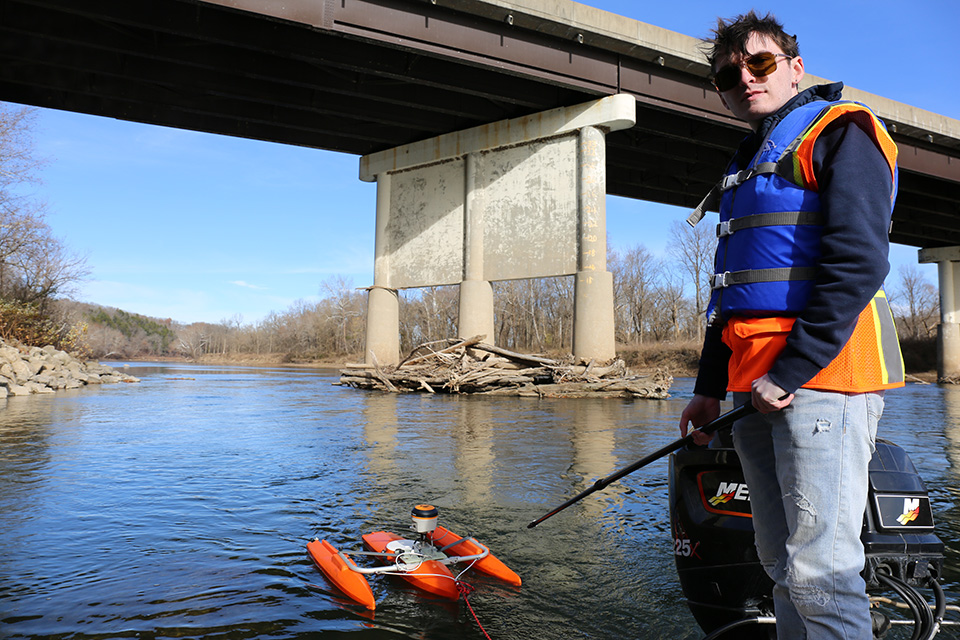A first-of-its-kind study from the Water Access, Technology, Environment and Resource (WATER) Institute at Saint Louis University brings new awareness to bridge safety across Missouri.
When people think of Missouri, their first thought is not usually of the many rivers that flow across the state. With two of America’s longest rivers carving their way through the state, water is an essential part of Missouri’s identity — as are the thousands of bridges built over these bodies of water.
Missouri is home to over 25,000 bridges on its state system, most of which cross a variety of waterways from small creeks to major rivers. Many Missourians cross these bridges daily without a second thought, but time takes its toll on the stability of these structures — as does bridge scour, the erosion of the soil surrounding a bridge’s foundation in a body of water.
Bridge scour is the leading cause of bridge failure nationwide. This alarming statistic
prompted the Missouri Department of Transportation (MoDOT) to partner with an institution
that would conduct bridge-scour analysis on a list of “scour critical” bridges developed
in the 1990s. The Water, Access, Technology, Environment and Resources (WATER) Institute
at Saint Louis University was selected as this institution.
In April 2020, the WATER Institute was awarded the “Scour Analysis on Missouri Bridges”
project by MoDOT. They compiled a research team led by Amanda Cox, Ph.D., PE, associate professor of civil engineering and director of the WATER Institute, and
Ronaldo Luna, Ph.D., PE, professor of civil engineering. The goal was to examine bridge scour on several
Missouri bridges and report on their long-term stability by evaluating how newer hydraulic
modeling methods and improved data resolutions impact predicted scour depths. The
team completed its work and published its final report in July 2023.
"It’s a study that has never been done before,” said Cox. “It is the first study that we have found that looks at [bridge scour in this way], so it's truly a first-of-its-kind study, and it will impact MoDOT's decisions on how they look at vulnerable bridges.”
Scouring Our State Rivers
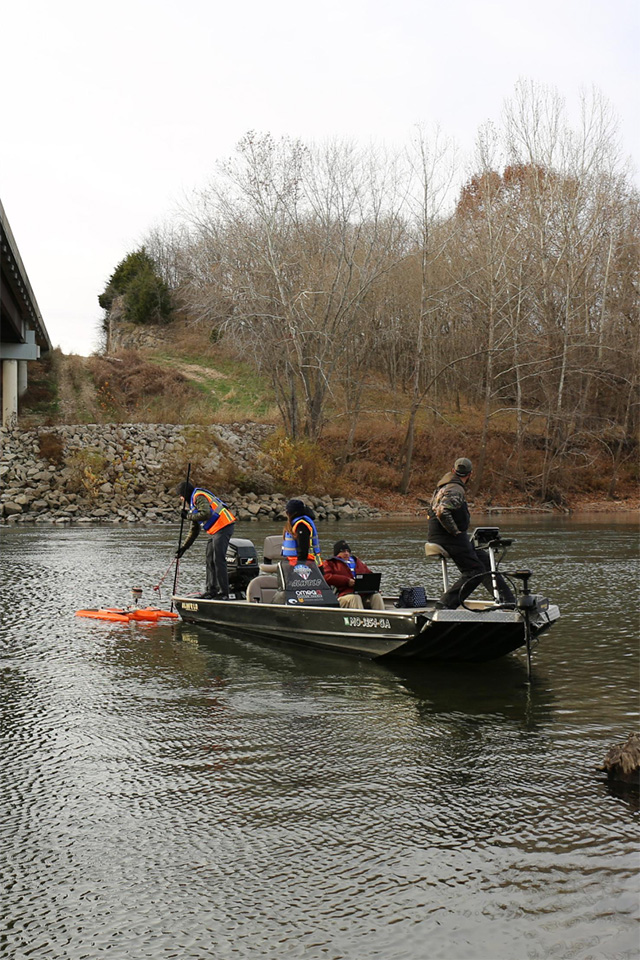
Bridge scour is composed of three types: local, contraction and long-term scour. Cox and Luna’s team specifically took a closer look at local scour, which is the removal of material that lies at the abutments and piers of a bridge, and contraction scour, which removes materials from the bed and banks across the water channel width.
The team examined how much scour is predicted to occur during major weather events — specifically, 100-year and 500-year flooding — and how this could impact a bridge’s future stability. They explored five sites throughout the state, including two larger sites on the Gasconade and Missouri rivers. The team selected bridges for their variety in water size, flow patterns, sediment levels, and other factors that were monitored by contrasting one-dimensional (1D) and two-dimensional (2D) hydraulic modeling. Hydraulic modeling illustrates and computes the changes in water depth, quantity and currents.
In addition, they also conducted fieldwork at each unique bridge site to support the scour risk assessment. SLU faculty, graduate students and undergraduate students participated in GPS mapping, the collection and analysis of soil samples, and surveying river bathymetry, or the investigation of underwater channel surfaces.
Previously, bridge-scour analysis in Missouri only went as far as utilizing 1D computer models to estimate the intensities from unique swirls, angles and slopes of water movement against a bridge’s foundation. However, 1D modeling only captures the flow downstream.
“[Model techniques] have evolved over time to go from more simple, which we call 1D models that only look at the flow of downstream river direction, to more sophisticated numerical models [like 2D modeling],” she said. “It looks at the flow in both the downstream and lateral direction so [we] can see swirling flows and other more complex flow patterns that actually exist in the real-world environment,” she said.
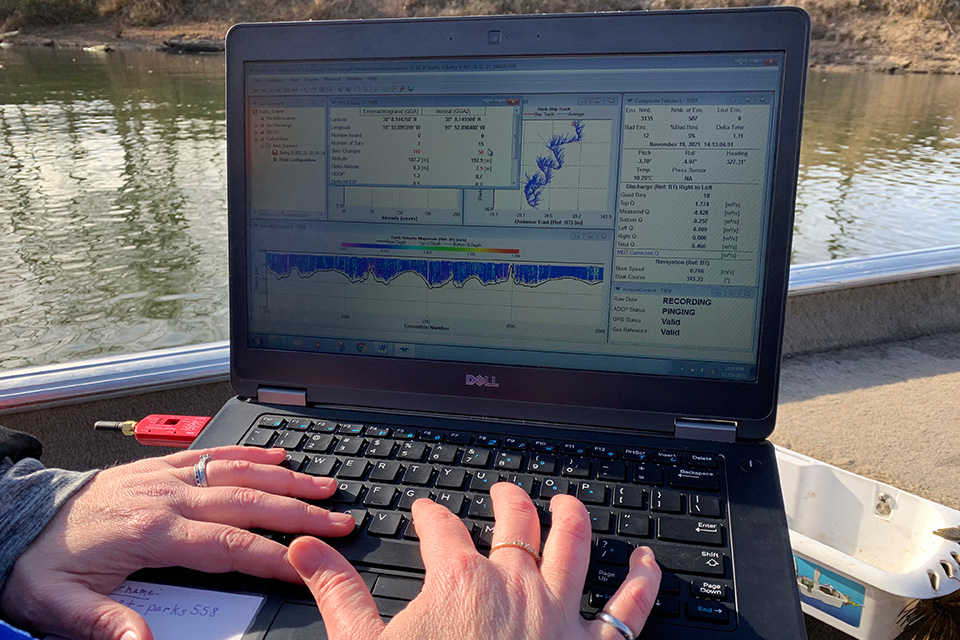
Cox explained that, for many years, 1D hydraulic modeling was the best way to estimate bridge scour, but the team’s research determined it was imperative to use the more advanced 2D modeling in order to gather the best results for the project.
Throughout their analysis, 2D modeling created a sharper picture of the complexities of water flow such as rivers with multiple bends or assessing obstructions in the water channels like logs and river debris. In their report, the SLU team recommended that MoDOT use 2D modeling for future predictive scour assessments to best anticipate bridge scour in our state.
“With 2D modeling, they now have tools that will automatically determine required input parameters based on the results of the numerical modeling,” Cox explained. “This gives less subjectivity and more precision.”
Out in the Field
It’s not every day that your classroom goes from a desk to a boat. But Peter Kickham, a research assistant with the WATER Institute, and his fellow student researchers set sail to make large contributions to the bridge-scour project.
“In less than a year as a WATER Institute research assistant, I have been able to go to six different streams or rivers to collect data, make observations, and learn while also having a great, immersive experience in nature and applying what I have learned in the field,” Kickham said.
Kickham is a recent graduate of SLU’s Master of Science in Civil Engineering program, and he chose to study water resources because of his early interest in weather and the necessity of water for all people.
“I see water as the common factor between not only all people on Earth, but all living things,” Kickham said. “When we look for life on other planets, we don’t look for plants or animals, we look for water. That’s because it is our most important resource that everyone deserves.”
His passion for water propelled him into his role as a research assistant within the WATER Institute and ultimately landed him a role as a leader of the bridge-scour project alongside Cox and Luna. Kickham not only participated in scour modeling, but he also created graphics of water patterns and visited field sites to collect data and deploy the equipment used to examine bridge scour.
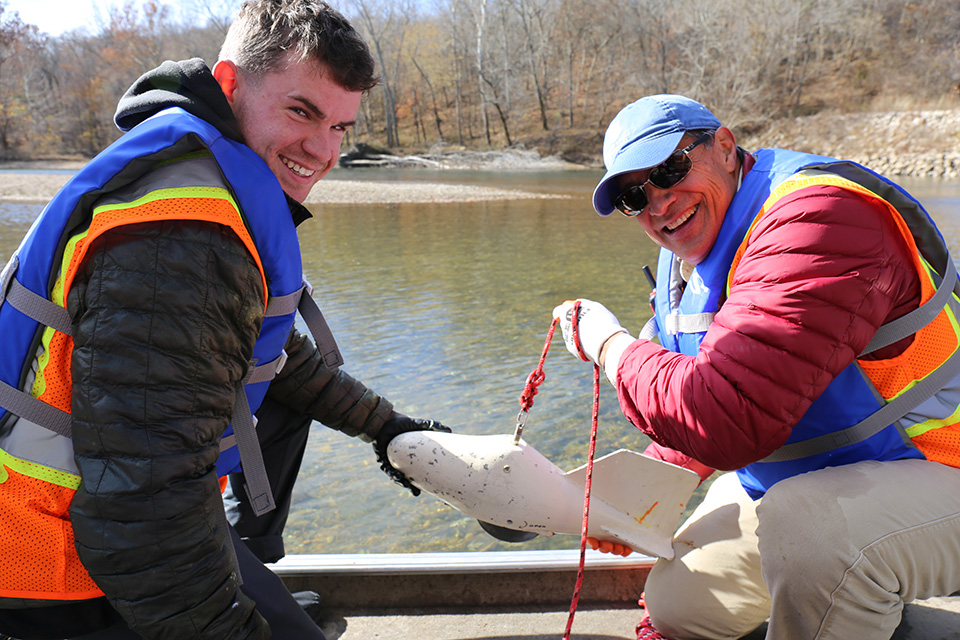
Cox was impressed by the caliber of SLU students such as Kickham, and she’s grateful for their contributions to the MoDOT project.
“They helped with data collection, processing, numerical modeling and scour calculations,” she said. “One of the main things they were able to do was help create all the visuals, graphs and charts. We have some exceptional undergraduate students who learn quite quickly and make significant contributions.”
One undergraduate student was Warren Radford, who has since graduated from SLU with a Bachelor of Science in Civil Engineering and works as a hydraulics engineer for the United States Army Corps of Engineers.
“I really enjoyed collecting our own data because I got to see exactly how all that data collection went directly into the work we did,” Radford said. “I enjoyed my experience because all of the professors in the SLU [civil] engineering department are [licensed] professional engineers, and it was interesting hearing from them about their experiences in the field.”
The WATER Institute believes experiences like this are crucial to shaping students into well-rounded researchers and professional engineers. Cox shared that Radford, Kickham, and another undergraduate student, Harrison Wooters, learned to use industry-standard software programs, and Kickham and Wooters wrote portions of the final MoDOT report. This unique experience sets SLU students apart from other students looking for similar jobs in engineering.
“Our students are able to become trained on software programs that are being used in the industry that are not always used in an academic environment,” Cox said. “Introducing them to the concepts and getting them that expertise sets them up for success in jumping into projects when they end up getting an engineering position.”
Building Better Bridges
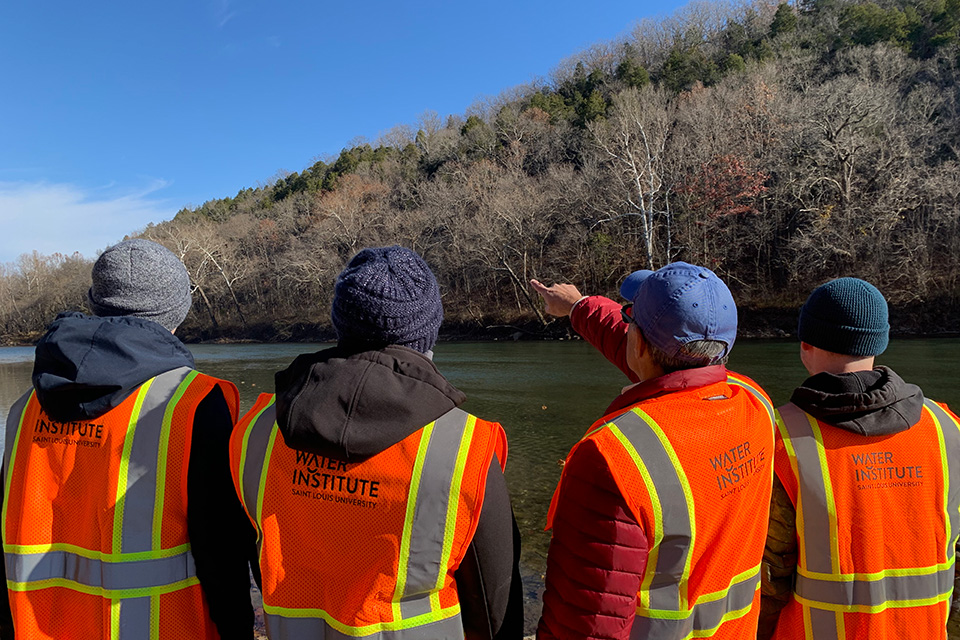
Bridge scour is not a new concern for Missouri bridges. However, recent weather events have made it even more important to assess our bridge’s structural integrity to ensure safety for all on the roads. The WATER Institute’s recommendations to MoDOT lay out a proactive plan that will reevaluate possible scour at other high-risk bridges throughout the state. MoDOT is evaluating these recommendations to construct its newest bridges and plan for the future impact of bridge scour throughout the state.
From the team’s extensive comparison of both modeling methods, 2D modeling will help in analyzing future scour risk along our state’s bridges. Its capability to show detailed models of terrain, flow velocity, scour depths, and other essential factors in assessing bridge scour will help improve bridge safety and Missouri bridge design.
"You want as much accuracy as possible in your predictions because of the significance of bridge scour, and its potential for bridge safety and our own safety,” Cox said. "What we really wanted is the best estimate so we can make informed decisions about which bridges need extra attention. If we can identify [bridges] that are vulnerable, we can then go out and make those stronger."
Story by Mary Pogue, senior copywriter, Paradigm.
This piece was written for the 2023 SLU Research Institute Annual Impact Report. The Impact Report is printed each spring to celebrate the successes of our researchers from the previous year and share the story of SLU's rise as a preeminent Jesuit research university. Design, photography, and some writing contributions are made by Paradigm. More information can be found here.
